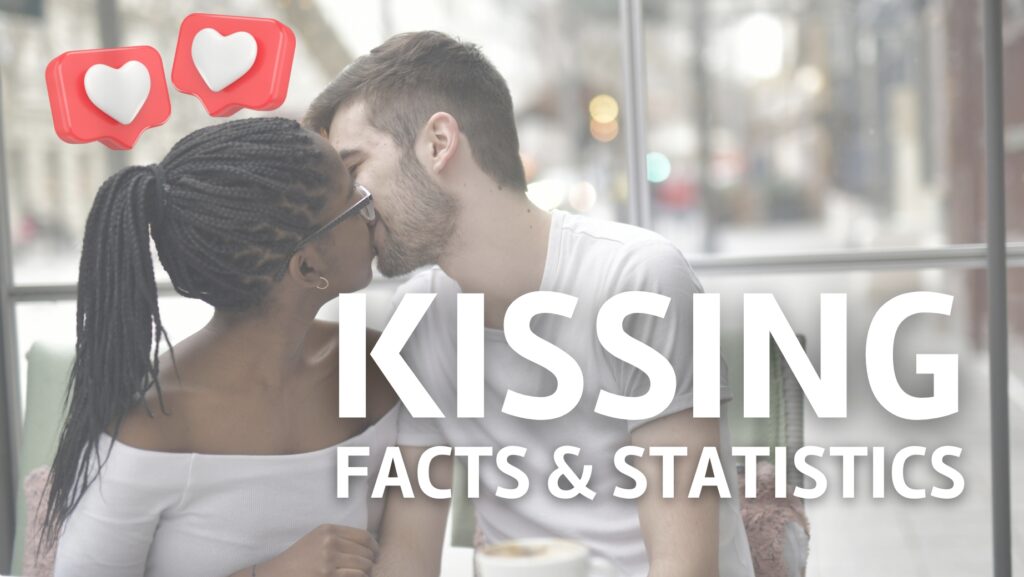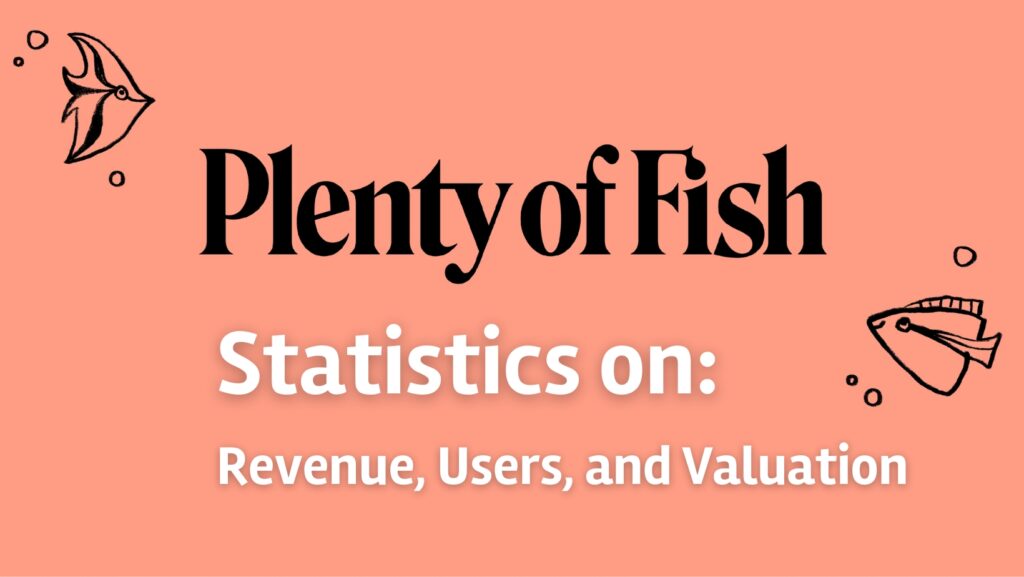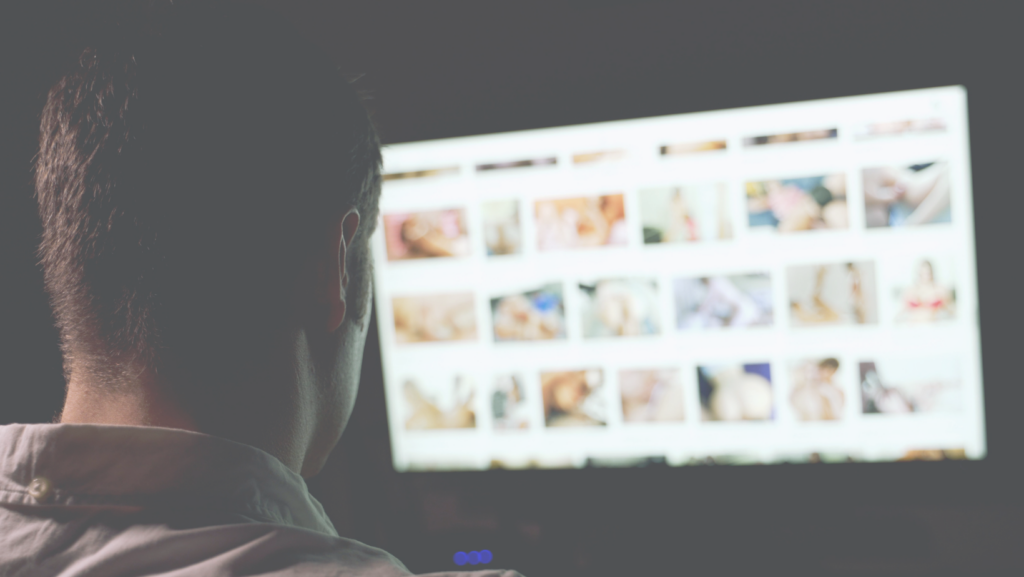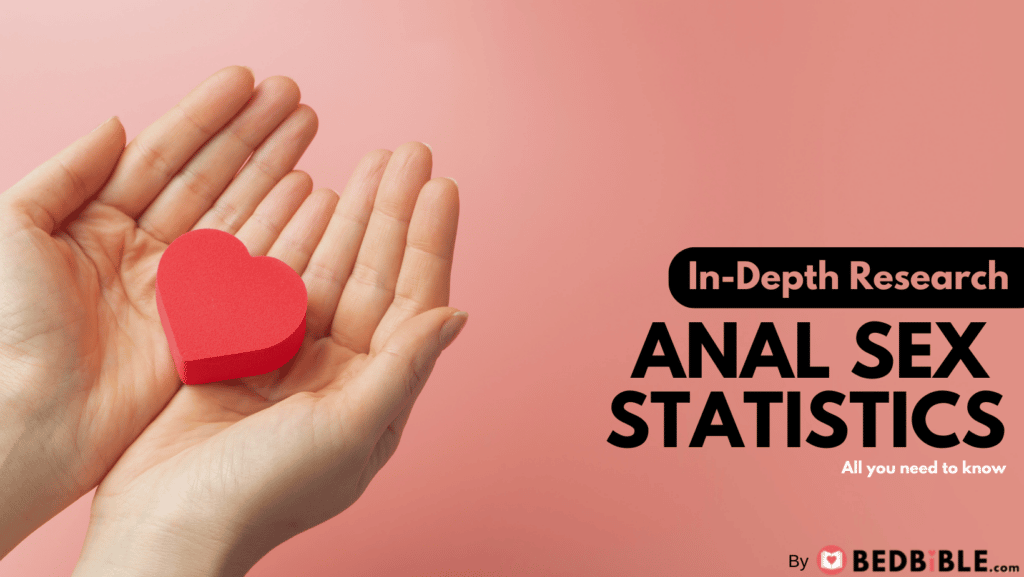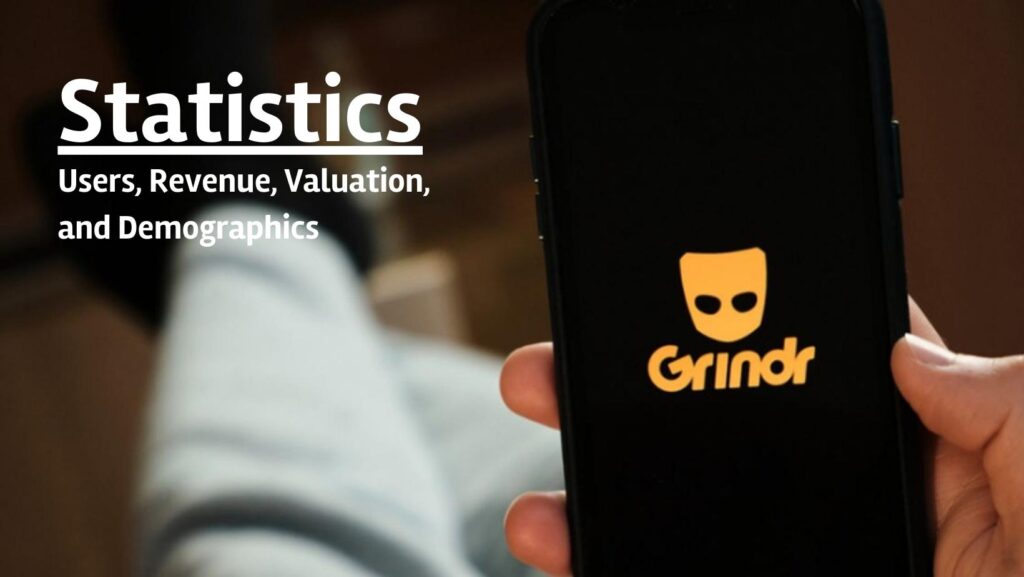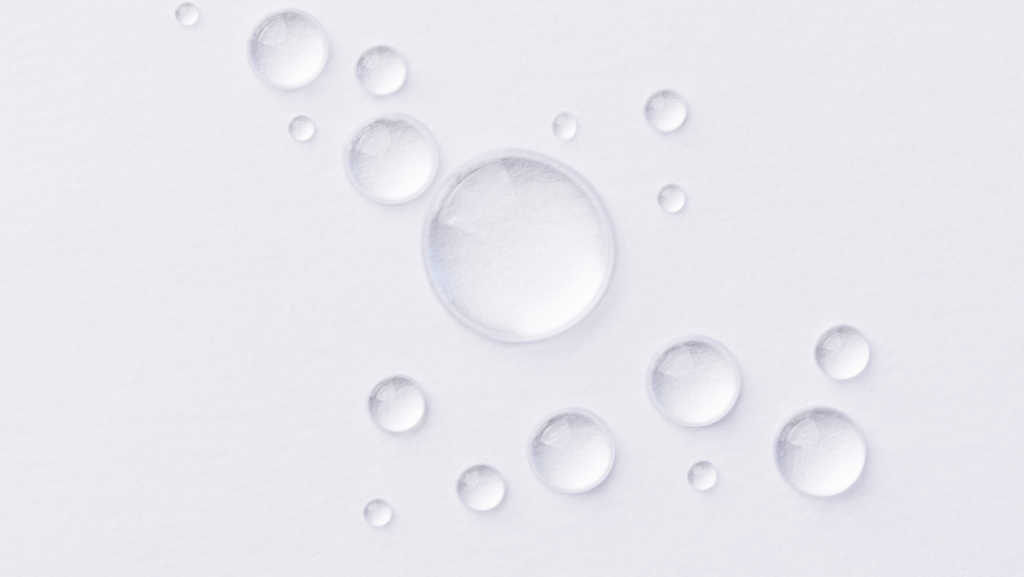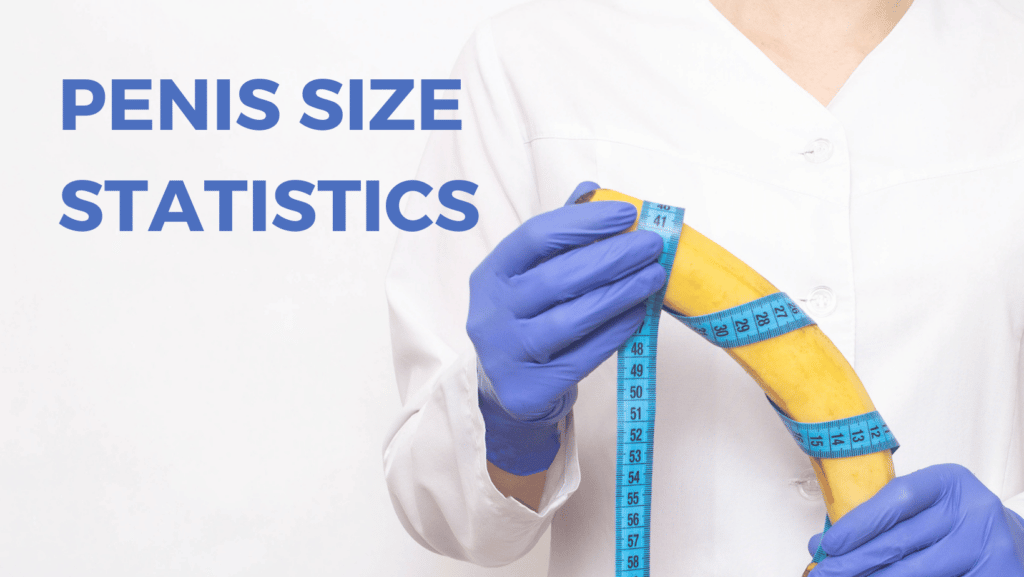This is the most comprehensive meta-analysis of the study of kissing ever conducted. More than 138 different facts and statistics were revealed about kissing. The meta-study investigated the results of more than 300 papers and scraped the results of most based on too little statistical evidence. On top of this, more than 13,000 survey responses were collected and analyzed.
In this article, you’ll discover:
- Health benefits of kissing
- Demographics
- History of kissing
- Sexual benefits
- Risks involved in kissing
- Science
- Culture
- Kissing laws (forbidden)
- Kissing in relationships
- How to kiss
- 15 Actress and Actors who hated kissing on screen
- World records
- Other fun facts
- Infographic
Top Findings
- A person on average kisses for more than 20,160 minutes in their lifetime (2 weeks without sleep).
- 50% of people have kissed before they turn 14 years old.
- Lips are 100 to 200 times more sensitive than fingertips.
- A normal kiss burns 2-6 calories per minute, while a passionate kiss can burn up to 26 calories per minute.
- Kissing activates 29 different facial muscles.
- 10% of the world’s population do not use kissing to express affection or love, rather they use nibbling or licking.
- Theories have arisen that kissing is a behavior first expressed in prehistoric apes.
- Indiana has a law forbidding men with mustaches to habitually kiss human beings, while Connecticut (Harford) men are banned from kissing their wives on Sundays. In Cedar Rapids, Iowa, it is a crime to kiss a stranger.
- In a kiss, between 10 million and 1 billion bacteria are shared between two people.
- More than 278 different types of bacteria colonies are shared in a kiss. 95% of these are completely harmless.
- More than 30 different types of kissing are mentioned in the Kama Sutra – one of them being tongue fighting.
- Men, who kiss their wives goodbye before going to work, on average live 5 years longer compared to men who do not.
- Some people can achieve orgasms solely from kissing.
- Around 67% of the world says that tilting their head to the right is the standard.
- Kissing has positive benefits for teeth health. The anticipation of a kiss increases saliva, which in turn works plaque-dispersing and protects skin from dermatitis.
- Kissing releases dopamine and oxytocin causing a feeling of euphoria and lifting the mood.
- 67% of men report that do not care whether their partner wears lipstick or not.
- The main muscle used for kissing is called orbicularis oris.
- Testosterone has been found in men’s saliva, which over time has a positive effect on female libido.
- In summation, kissing can increase libido, relieve pain, prevent cavities, strengthen the immune system, and work as stress prevention as well as reduce dermatitis, skin rashes, and blemishes.
- The scientific name for kissing is osculating.
- The first kiss…
- recorded in history is believed to be between the gods Shiva and Parvati in Hindu tradition,
- that is referenced in the Indian folk tale Mahabharata written 400 BC,
- in movie history is between John C. Rice and May Irwin in the movie “The Kiss” from 1896.
- The average woman shares kisses with 79 men before getting married.
- The longest kiss ever recorded lasted more than 58 hours!
Health benefits of kissing
- A normal kiss burns 2-6 calories per minute.
- A passionate kiss burns 20-26 calories per minute.
- You use 29-34 different facial muscles when kissing.
- Good kissing helps reduce dermatitis, skin rashes, and blemishes.
- Kissing is also shown to help make your skin glow and your eyes shine.
- Kissing has benefits for your dental health; the excess saliva cleanses your mouth thereby protecting your teeth from decay by being plaque-dispersing.
- Kissing releases dopamine, thereby inducing feelings of euphoria and making you both more alert and awake.
- Studies show that men live 5 years longer on average if they kiss their wives goodbye in the morning before going to work.
- Kissing releases oxytocin which in turn reduces blood pressure and cortisol levels. Additionally, increased levels of oxytocin increase pain thresholds, reduce anxiety, and improve the activity of other transmitter systems in the body.
- Kissing increases blood flow and thereby works to decrease headaches or menstrual cramps.
- Kissing improves mental health and self-esteem.
- Kissing boosts the production of serotonin in the body making you feel focused, emotionally stable, happier, and calmer.
- By sharing bacteria with partners (through kisses) it helps boost your immune system and improve resistance to allergies.
- Kissing results in the transfer of roughly 10 million to 1 billion bacteria.
- In each kiss, it is estimated that as many as 278 types of bacteria colonies are transferred.
- 95% of the 278 different colonies of bacteria packed into a kiss are harmless.
- Kissing will boost sex drive because saliva contains testosterone and that has been shown to increase libido upon intake.
- Other possible health-beneficial substances shared in a kiss: are 0.7 mg of protein, 0.18 mg of organic compounds, 0.71 mg of different fats, and 0.45 mg of sodium chloride (salt).
Demographics
- Only 90% of the world’s population uses kisses to show affection. 10% of the world (approx. 650m people) use other similar forms like nibbling, licking, or rubbing noses together (also called the “smell kissed” and practiced by Eskimos).
- On average women report that it is okay to kiss 79 different men before getting married.
- On average a person will spend more than 2 weeks non-stop kissing (20,160 minutes, or 336 hours).
- 50% of people have kissed someone romantically before they turn 14.
- Men who kisses their partner before going to work on average has higher incomes compared to men that do not.
- 67% of men report that they are indifferent towards if women wear lipstick during a kiss a not.
- Men are 15 times more likely to initiate a kiss with a long term partner, and 32 times more likely to initiate a kiss with a new partner.
- 20% report that they would break up with someone if they were a bad kisser.
- There is a statistical significant relationship between having healthy children and chemistry when kissing.
- 93.6% have kissed at least one partner in the past 3 months.
- The mean duration of kissing in the past 3 months lasted for 11.5 – 12.2 minutes (reported by men, and women)
- Women on average self-report to kiss for longer compared to their partner.
- Singles on dating apps report to kiss twice the number of different partners (4.6 on average) in the past 3 months compared to non-dating app users (who kiss 2.2 people on average).
- 91.6% of couples report to have kissed in public.
- The average kiss lasts approximately 6 seconds. However, this can vary greatly depending on the context and the individuals involved. A quick peck on the cheek may only last a few seconds, while a romantic kiss can last much longer.
- On average, a person will kiss 15 people in their lifetime. This number can vary greatly depending on personal factors such as relationship status, cultural background, and personal preferences.
History of kissing
- Romans kissed on the eyes or the mouth as a way of greeting each other. But also had names for other types of kisses. A kiss on the cheek was called “Osculum”, a kiss on the lips was called “Basium”, and a kiss that is deep and passionate was called “Savolium”.
- The word kiss originates from the old English word “Cyssan”, which originates from Germanian “Kussijan”. It is believed the word stems from the sound a kiss can make.
- The slang “kiss my ass” have been dated back to 1705.
Sexual benefits
- Women are more likely to orgasm during sex where kissing is involved.
- 14% of women are open to having sex without kissing.
- Some people can reach orgasm solely by kissing.
- The Kama Sutra contains more than 30 types of kisses, one of the types are called a tongue fight.
Risks involved in kissing
- STD’s such as herpes, HIV and syphilis can transfer orally (through kissing).
- You can get cold sores (herpes) from kissing.
- You can attract Meningococcal from kissing – which includes septicaemia and meningitis.
- Certain bacteria shared through kissing can also cause tooth decay.
- Kissing can also spread material from foods that you are allergic too (for example nut remains from your kissing partners last meal).
Science
- Kissing involves mainly one mucles, called the orbicularis oris – the mucle encapsulating the lips (in a circular fashion).
- Lips are 100 to 200 times more sensitive than fingertips.
- Lips are just as unique as fingerprints.
- The scientific name for kissing is osculating. This term comes from the Latin word “os,” which means “mouth.”
- A study published In Scientific American, speculating that kissing may have evolved from a behavior started by monkeys.
- Kissing is suspected to serve an evolutionary purpose. As mens saliva contains testosterone that upon ingestion will increase libido in woman, it could have been an evolution proved effective to increase the likelihood of mating.
- Kissing is also believed to be an evolutionary legacy from mothers chewing food and feeding babies (like birds) and from breastfeeding.
- Human brains have certain set of neurons that help locate a partners lip even in the dark.
- In a kiss a lot of different substances are transferred, on average: 9 mL of water, 0.7 mg of protein, 0.18 mg of organic compounds, 0.71 mg of different fats, and 0.45 mg of sodium chloride (salt).
- The study of kissing is called “philematology”. “Philos” is ancient Greek and means “earthly love”.
- It is believed by some scientists that kissing serves a purpose of exchange bodily salts and serbum that helps form relationships.
- Science is unsure if kissing is an instinct in humans, or a behavior that is learned. Indications that kissing is a social construct is found due to the fact that some cultures don’t practice kissing.
- Some primates kiss, however, without tounge.
- An overwhelming desire and eager to kiss is referred to as “Basorexia” in science.
Culture
- Cheek kissing is most common in the Middle East, the Mediterranean, Southern-, Central- and Eastern Europe, the the Horn of Africa, Central- and South America. But there is a difference between how many cheek kisses you give: One Kiss: Colombia, Argentina, Chile, Peru, the Philippines, Two Kisses: Spain, Italy, Greece, Germany, Hungary, Romania, Croatia, Bosnia, Brazil, and some Middle Eastern countries (though not between opposite sexes), Three Kisses: Belgium, France, Slovenia, Macedonia, Montenegro, Serbia, the Netherlands, Switzerland, Egypt, and Russia.
- “French kiss” was termed in America in 1923. As French culture was believed to be overly sexualized, so was a kissed believed to be the same coined a “French Kiss”. In France they instead call it a “tounge” or “soul” kiss.
- Somalia for a long time believed that kissing would make you loose your soul.
- Bolivia’s indigenous Sirionó is known for not kissing romantically.
- In many cultures, a kiss on the hand is a sign of respect and admiration. This traditional gesture is often used as a way to show respect to elders, and can also be used to express affection and admiration for someone of the opposite sex.
- In some cultures, kissing is used as a way to celebrate important events, such as weddings and births. A kiss can be a symbol of love, joy, and celebration, and can help to create lasting memories.
- Some African tribes pay homage to their leader or chieftain by kissing the ground where they have or will walk. A homage unexpectedly replicated by the Pope, at his visit in 2019 to South Sudan leaders.
Kissing laws (forbidden)
- In Indiana a law exists that forbids men with mustaches to habitually kiss other human beings.
- In Connecticut (Hartford) men have been banned from kissing their wives on Sundays.
- In Illinois it is illegal to nuzzle or kiss your pet reptile.
- In Iowa (Cedar Rapids), it is a crime to kiss a complete stranger.
- In Florida (Tampa), it is illegal to kiss for more than five minutes.
- In Florida (Kissimmee), it is illegal to kiss in public.
The common denominator for all of these laws is naturally, that none of them are really enforced by law enforcement.
Outside the US there are also some crazy laws still around:
- In Hong Kong, it is illegal to kiss on a train during rush hour.
- In Malaysia, it is illegal to kiss in public.
- In Dubai, United Arab Emirates, it is illegal to kiss in public or engage in any other physical displays of affection.
- In Iran, it is illegal to kiss in public.
- In Singapore, it is illegal to kiss in public.
- In Thailand, it is illegal to kiss in public.
- In many countries in the Middle East, it is illegal to kiss in public or engage in any other physical displays of affection.
It’s important to note that these laws can vary greatly depending on the country and can change over time. It’s always a good idea to be aware of the laws and social customs in the areas you are visiting, especially when it comes to physical affection in public spaces. It’s also worth noting that laws and attitudes can differ between cities and regions within a single country, so it’s always best to check local norms and customs before engaging in any physical displays of affection.
Kissing in relationships
- A study found that people who kiss their partners goodbye in the morning are more likely to have a happy and stable relationship. This simple gesture can help to establish and maintain intimacy between partners, and can also serve as a way to start the day on a positive and affectionate note.
- A survey found that 90% of people believe that a kiss can indicate the level of chemistry between two people. A kiss can help to establish a connection and gauge mutual attraction, which can be an important factor in determining the potential for a long-term relationship.
- A study found that women are more likely to judge a potential partner based on their kissing skills than men. This suggests that women place a greater importance on the act of kissing in romantic relationships.
- 72% of people consider a good kiss to be an important factor in a relationship. A kiss can help to establish and maintain intimacy between partners, and can also serve as a way to gauge the level of attraction and chemistry between two people.
- 78% of couples believe that a good kiss is important for a relationship.
- 75% of couples believe that a bad kiss can ruin a relationship.
- 69% of couples report that kissing regularly helps to maintain their relationship.
- 63% of couples feel that kissing is an important part of foreplay.
- 59% of couples feel that kissing is more intimate than sex.
- 55% of couples feel that kissing helps to improve their emotional connection.
- 43% of couples feel that kissing is more intimate than any other physical act.
- 33% of couples believe that kissing is a good way to resolve conflicts in a relationship.
- Some studies indicate that men are more concerned and particular about who they kiss, compared to who they have intercourse with – indicating that it is perceived as more intimate by men.
How to kiss
- 66% of people prefer to kiss with their eyes closed. This is often considered to be a more intimate and romantic gesture, as it allows both partners to focus solely on the physical sensation of kissing.
- Two-thirds of people (67%) report that they primarily tilt their heads to the right when kissing.
- 51% of people prefer to start with a gentle, closed-mouth kiss.
- 43% of people prefer to use their tongue during a kiss.
- 29% of people prefer to use their hands during a kiss.
- 25% of people prefer to kiss for longer periods of time.
- 19% of people prefer to mix it up with a variety of kissing styles.
- 15% of people prefer to use their teeth during a kiss.
- 12% of people prefer to kiss more aggressively.
15 Actress and Actors who hated kissing on screen
Here is a list of a few actresses who have publicly stated, that they do not like kissing on screen.
- Jennifer Aniston: The actress has stated that she finds kissing on screen uncomfortable and awkward.
- Julia Roberts: Roberts has said that she finds kissing on screen to be a “necessary evil.”
- Kate Winslet: Winslet has stated that she finds kissing on screen to be “disgusting.”
- Emma Watson: Watson has said that she finds kissing on screen to be “unnatural” and has described it as a “mechanical process.”
- Mila Kunis: Kunis has stated that she finds kissing on screen to be “weird.”
- Angelina Jolie: Jolie has stated that she finds kissing on screen to be “uncomfortable.”
- Keira Knightley: Knightley has stated that she finds kissing on screen to be “awkward.”
- Sandra Bullock: Bullock has stated that she finds kissing on screen to be “weird.”
- Sarah Michelle Gellar: Gellar has stated that she finds kissing on screen to be “unnatural.”
- Cameron Diaz: Diaz has stated that she finds kissing on screen to be “weird” and “awkward.”
The same goes for famous male actors – who for some reason, however, are not as frequently asked about their kissing on-screen. Wonder why…
- George Clooney: Clooney has stated that he finds kissing on screen to be “awkward.”
- Ryan Gosling: Gosling has stated that he finds kissing on screen to be “uncomfortable.”
- Hugh Grant: Grant has stated that he finds kissing on screen to be “disgusting.”
- Johnny Depp: Depp has stated that he finds kissing on screen to be “weird.”
- Daniel Radcliffe: Radcliffe, who played Harry Potter in the Harry Potter film series, has stated that he finds kissing on screen to be “awkward.”
World records
- Florian Silbereisen from Germany holds the record for most kisses given in one minute with 117 kisses (almost 2 kisses per second). The record was achieved in 2011.
- Most kisses in a minute by a couple is 277 and the record is held by Cherry Yoshitake and Kumiko Shiratori (both from Japan). The record was achieved in 2020.
- The longest on-screen kiss in a commercial film was by Stephanie Sherrin and Gregory Smith in “Kids in America” from 2005 and lasted 6 minutes and 44 seconds.
- Pennsbury High School in Pennsylvania made the largest mural of kisses consisting of 41,692 note pades kissed and stuck to a wall (shown for prom).
- The worlds longest kissing relay consisted of 1,015 participants from spain in the small city of Teruel in 2018.
- The very first interracial kiss on TV recorded was transmitted on UK television in 1959. The kiss was between Andree Melly (UK-born) and Lloyd Reckord (Jamaican-born).
- Most kisses underwater was achieved in 2014 in Brazil by 13,577 pairs (27,154 people kissing at the same time underwater!)
- The worlds longest kiss underwater lasted 3 minutes and 24 seconds between Michele Fucarino and Elisa Lazzarino on the Italian TV show “Lo Show dei Record”.
- The worlds most expensive kiss sold cost $50,000 – it was sold at a charity auction. Sold by Hollywood actress Sharon Stone and bought by Joni Rimm. The kiss was sold in 2003.
- The most kisses received in under 30 seconds is 74 and were received by Florian Silbereisen (you might remember him from the most kisses given in under a minute). The record was achieved in 2017.
- The most people kissed in 8 hours was achieved by Alfred A.E. Wolfram from the US. He managed to kiss 11,030 people in 1998.
- Elton Castee managed to kiss people from 50 different nationalities in under a minute, and thereby holds the record for most different nationalities kissed in under a minute, which he did in 2019.
- The record for most kisses received in under a minute is 131 kisses and held by Japanese born Shiko Kurihara.
- The world record for most kisses received on the hand in under a minute is 112 kisses and is held by Andrew Schulz who managed the achievement in 2013.
- The longest kiss ever recorded lasted for 58 hours, 35 minutes and 58 seconds non-stop. It required interlocked lips and was achieved by Ekkachai and Laksana Tiranarat – a couple from Thailand who competed against 9 other couples ultimately winning the world record, a cash price, and two diamond rings.
- The record for most kisses between two actors in a single movie is held by the 1926 movie, Don Juan, and featuresd 127 kisses between John Barrymore and Mary Astor.
Other fun facts
- Kiss, the band, once sold a lipstick kiss imprint of Mick Jaggers Lips for $1,600.
- Kissing a donkey’s nostrils is believed to be able to cure a cold.
- Kissing to conclude a wedding stems from an ancient Roman tradition of kissing to conclude a contract between two people.
- In 1930 it became illegal to portray kissing with people lying down in films. At least one person in the kiss had to be standing or have at least one foot placed on the ground. The law was called Hays Code and was repealed in 1968. The law also only allowed for a kiss to last a maximum of 6 seconds.
- Old Japanese scripture warns men against kissing woman during orgasm, as doing so would prove a risk of the woman biting the toungue of the man off.
Infographic
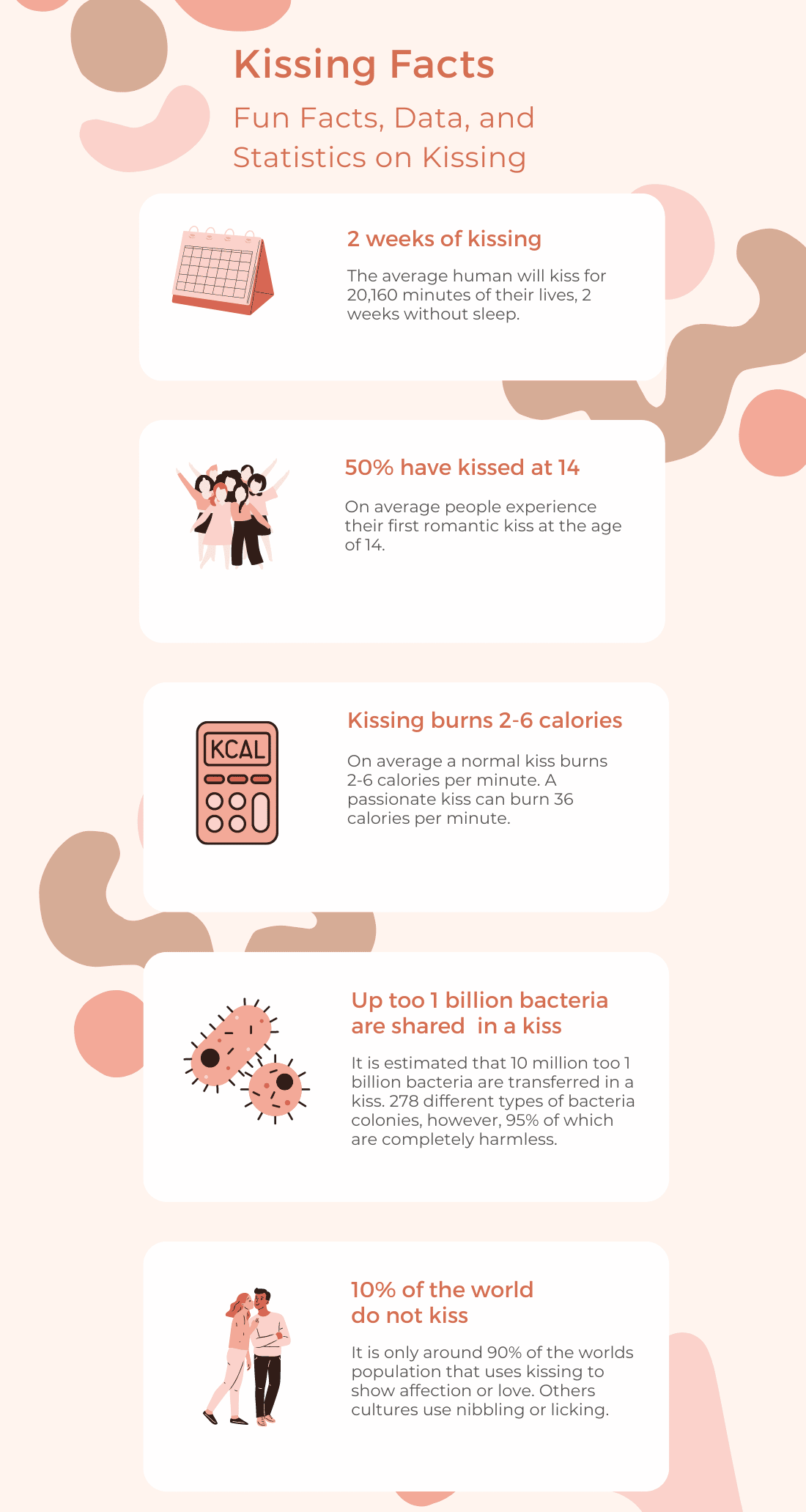
Sources
- Agyeman, H. K., Owusu-Banahene, J., Agyeman, B. K., Darko, E. O., Agyeman, D., Afful, C., … & Korletey, W. (2019). Neurophysiology of Philematology and Some Infectious Disease. Advances in Biological Chemistry, 9(04), 143-155.
- Alpert, J. S. (2013). Philematology: the science of kissing. A message for the marital month of June. The American Journal of Medicine, 126(6), 466.
- Anderson, E., Adams, A., & Rivers, I. (2012). “I kiss them because I love them”: The emergence of heterosexual men kissing in British institutes of education. Archives of sexual behavior, 41, 421-430.
- Anderson, E., Adams, A., & Rivers, I. (2012). “I kiss them because I love them”: The emergence of heterosexual men kissing in British institutes of education. Archives of sexual behavior, 41, 421-430.
- Arafath, P. Y. (2014). Should muslims fear the kiss? Body as resistance in the Times of Hindutva. Economic and Political Weekly, 35-39.
- Bartram, D. (2000). Internet recruitment and selection: Kissing frogs to find princes. International journal of selection and assessment, 8(4), 261-274.
- Baumeister, R. F., & Leary, M. R. (1995). The need to belong: Desire for interpersonal attachments as a fundamental human motivation. Psychological Bulletin, 117, 497–529.
- Bealer, T. L. (2009). The Kiss of Memory”: The Problem of Love in Hurston’s” Their Eyes Were Watching God. African American Review, 43(2/3), 311-327.
- Bouchey, H. A., & Furman, W. (2003). Dating and romantic experiences in adolescence. In G. R. Adams & M. D. Berzonsky (Eds.), Blackwell handbook of adolescence (pp. 313–329). Malden, MA: Blackwell.
- Brooks-Gunn, J., & Paikoff, R. L. (1993). Sex is a gamble, kissing is a game”: Adolescent sexuality and health promotion. Promoting the health of adolescents: New directions for the twenty-first century, 180-208.
- Budnick, J. (2016). “Straight girls kissing”? Understanding same-gender sexuality beyond the elite college campus. Gender & Society, 30(5), 745-768.
- Burger, G. (1992). Kissing the Pardoner. PMLA, 107(5), 1143-1156.
- Carver, K., Joyner, K., & Udry, J. R. (2003). National estimates of adolescent romantic relationships. In P. Florsheim (Ed.), Adolescent romantic relations and sexual behavior: Theory, research, and practical implications (pp. 23–56). Mahwah, NJ: Lawrence Erlbaum Associates, Publishers.
- Collins, W. A., & Sroufe, L. A. (1999). Capacity for intimate relationships: A developmental construction. In W. Furman, B. Brown, and C. Feiring (Eds.), The development of romantic relationships in adolescence (pp. 125–147). New York, NY: Cambridge University Press.
- D’Aloia, A. (2011). The (Video) Art of Kissing. Notes for a Philematology of Moving Image. Zeta Cinema, 350-357.
- Danesi, M. (2013). The history of the kiss!: The birth of popular culture. Springer.
- Danesi, M., & Danesi, M. (2013). The Kiss in the Internet Age. The History of the Kiss! The Birth of Popular Culture, 143-158.
- Danesi, M., & Danesi, M. (2013). The Popular Origins of the Kiss. The History of the Kiss! The Birth of Popular Culture, 1-25.
- De Boer, A., van Buel, E. M., & Ter Horst, G. J. (2012). Love is more than just a kiss: a neurobiological perspective on love and affection. Neuroscience, 201, 114-124.
- Dhuvad, J. M., & Kshirsagar, R. A. (2015). Impacted love: mandibular kissing molars advisable to remove or not. Journal of Clinical and Diagnostic Research: JCDR, 9(1), ZL01.
- Eikenes, Å. (2022). Curious Science of Bodily Fluids: Discover What’s Floating Around Inside of You!. Simon and Schuster.
- Frijhoff, W. T. M. (1991). The kiss sacred and profane: reflections on a cross-cultural confrontation. In A cultural history of gesture from Antiquity to the present-day. With an introduction by Sir Keith Thomas (pp. 210-236). Polity Press.
- Goodrich, P. (1998). The laws of love: Literature, history and the governance of kissing. NYU Rev. L. & Soc. Change, 24, 183.
- Gottman, J., Gottman, J. S., Abrams, D., & Abrams, R. C. (2016). The Man’s Guide to Women: Scientifically Proven Secrets from the” love Lab” about what Women Really Want. Rodale.
- Gresh, D. (2011). Secret Keeper Devotional: A 30-Day Experience with the Delicate Power of Modesty. Moody Publishers.
- Gresh, D. (2011). What Are You Waiting For?: The One Thing No One Ever Tells You About Sex. WaterBrook.
- Hafer, T. (2012). Everything Romance: A Celebration of Love for Couples. WaterBrook.
- Hallett, R., Haapanen, L. A., & Teuber, S. S. (2002). Food allergies and kissing. New England Journal of Medicine, 346(23), 1833-1834.
- Hopkins, E. W. (1907). The Sniff-kiss in ancient India. Journal of the American Oriental Society, 120-134.
- Hubbard, P. (2013). Kissing is not a universal right: Sexuality, law and the scales of citizenship. Geoforum, 49, 224-232.
- Hughes, S. M., Harrison, M. A., & Gallup Jr, G. G. (2007). Sex differences in romantic kissing among college students: An evolutionary perspective. Evolutionary Psychology, 5(3), 147470490700500310.
- Joyce, S. N. (2013). A kiss is (not) just a kiss: Heterodeterminism, homosexuality, and TV Globo telenovelas.
- Kamei, S. (1981). The kiss and Japanese culture after World War II. Comparative Literature Studies, 18(2), 114-123.
- Kendon, A. (1975). Some functions of the face in a kissing round.
- Kirshenbaum, S. (2011). The science of kissing: What our lips are telling us. Grand Central Publishing.
- Klotz, S. A., Dorn, P. L., Mosbacher, M., & Schmidt, J. O. (2014). Kissing bugs in the United States: risk for vector-borne disease in humans. Environmental health insights, 8, EHI-S16003.
- Kort, R., Caspers, M., van de Graaf, A., van Egmond, W., Keijser, B., & Roeselers, G. (2014). Shaping the oral microbiota through intimate kissing. Microbiome, 2(1), 1-8.
- Lefkowitz, E. S., Wesche, R., & Leavitt, C. E. (2018). Never been kissed: Correlates of lifetime kissing status in US university students. Archives of Sexual Behavior, 47(4), 1283-1293.
- Malinowska, A., & Gratzke, M. (2012). The Materiality of Love. Essays on affection and.
- Martin, K. A., & Kazyak, E. (2009). Hetero-romantic love and heterosexiness in children’s G-rated films. Gender & Society, 23(3), 315-336.
- Morris, C. E., & Sloop, J. M. (2006). “What lips these Lips have kissed”: Refiguring the politics of queer public kissing. Communication and Critical/Cultural Studies, 3(1), 1-26.
- Murali, C. (2016). Disrupting “the Moral”: Kiss of love and the politics of sexual morality in Kerala. In Singularities International Conference on Power (Vol. 3, No. 1, pp. 92-100).
- Müller, V., & Lindenberger, U. (2014). Hyper-brain networks support romantic kissing in humans. PLoS One, 9(11), e112080.
- Obu, R. N. (2022). Kissing reduces blood pressure, boosts the immune system. Studies
- Opler, M. K. (1969). Cross-cultural aspects of kissing. Med Asp Hum Sex, 3(2), 11-21.
- Penn, M. P. (2005). Kissing Christians: Ritual and Community in the Late Ancient Church. University of Pennsylvania Press.
- Radio, K. C. Kissing reduces blood pressure, the exchange of saliva boosts the immune system.
- Regan, P. C., Durvasula, R., Howell, L., Ureno, O., & Rea, M. (2004). Gender, ethnicity, and the developmental timing of first sexual and romantic experiences. Social Behavior and Personality: an international journal, 32(7), 667-676.
- Rupa, P. (2015). Diffusion of news through social media with reference to the kiss of love movement on Facebook. Artha Journal of Social Sciences, 14(3), 39-55.
- Rupp, L. J., & Taylor, V. (2010). Straight girls kissing. Contexts, 9(3), 28-32.
- Stone, E. (2017). Black sheep and kissing cousins: How our family stories shape us. Routledge.
- Utley, E. A., & Menzies, A. L. (2009). Show Some Love: Youth Responses to ‘Kiss Me thru the Phone.’. Women and Language, 32(2), 68-77.
- Welsh, D. P., Haugen, P. T., Widman, L., Darling, N., & Grello, C. M. (2005). Kissing is good: A developmental investigation of sexuality in adolescent romantic couples. Sexuality Research & Social Policy, 2, 32-41.
- Wlodarski, R., & Dunbar, R. I. (2013). Examining the possible functions of kissing in romantic relationships. Archives of sexual behavior, 42, 1415-1423.
- Woody, J. D., Russel, R., D’Souza, H. J., & Woody, J. K. (2000). Adolescent non-coital sexual activity: Comparisons of virgins and non-virgins. Journal of Sex Education and Therapy, 25, 261–268.
